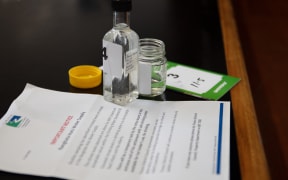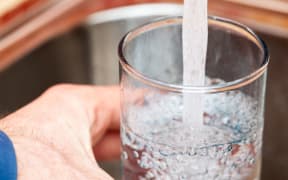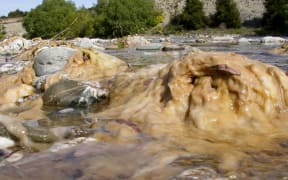
The survey found 35 wells had nitrate concentrations above the maximum allowable level for drinking water, of 11.3mg/L. Photo: RNZ
More than half of the wells monitored in the Canterbury Regional Council's annual groundwater survey] have shown nitrate levels are still likely increasing.
Read the Annual Groundwater Quality Survey 2023 (PDF 10.6MB)
The results of the 2023 survey of 349 wells across the region showed little change, with high nitrate levels and E coli in some water sources.
Groundwater is the major source of drinking-water supply in Canterbury.
Samples were taken from a mix of private domestic wells, irrigation water wells, community water supply wells, wells for industrial supply, and purpose-built monitoring wells.
The survey found 35 wells had nitrate concentrations above the maximum allowable level for drinking water, of 11.3mg/L, which was down from 44 wells in 2022.
However, long-term trends showed nitrate levels appeared to be increasing in 59 percent of the wells, with only 17 percent likely decreasing.
In Ashburton, 22 of the 60 wells tested in the town had nitrates above 11.3mg/L.
The regional council's acting groundwater science manager, Davina McNickel, said 2023's results did not show any clear improvement in nitrate concentrations.
"Efforts to change land use and farming practices over the past 10 years were designed to reduce nitrogen concentrations in our groundwater. However, it will take many years before we start to see reductions in nitrate in groundwater as a result of these efforts," she said.
Nine percent of wells failed to meet drinking water standards for E coli, with the bacteria being detected in 32 water samples.
This was slightly fewer than the previous year's survey.
McNickel said the regional council tested for E coli because it was an indicator of faecal contamination.
The bacteria could cause stomach cramps, diarrhoea and vomiting.
"Our groundwater is vulnerable to contamination from faecal sources, and we recommend that people who own private wells test regularly for the presence of E coli, especially after heavy rain," McNickel said.
Canterbury public health expert Dr Tim Chambers previously told RNZ there was growing evidence the country's maximum allowable level of nitrate in drinking water should be halved.
Chambers said research had shown drinking water nitrate levels of 5 mg/L could be linked to an increased risk of premature births.
Greenpeace had long raised its own concerns about the nitrate levels in Canterbury's drinking water, and was calling for the drinking water standard for nitrate to be 11 times lower.
The national water regulator Taumata Arowai previously said New Zealand's drinking water standards were set out in regulations made under the Water Services Act 2021.
It said the Maximum Acceptable Values (MAVs) for substances in drinking water, including nitrates, were generally based on World Health Organisation drinking water guidelines, which were widely used internationally.
"We understand that further studies on the health impacts of nitrates are underway in New Zealand. Any findings will add to the body of evidence that Manatū Hauora analyses when providing advice on the MAV for New Zealand," Taumata Arowai said.





